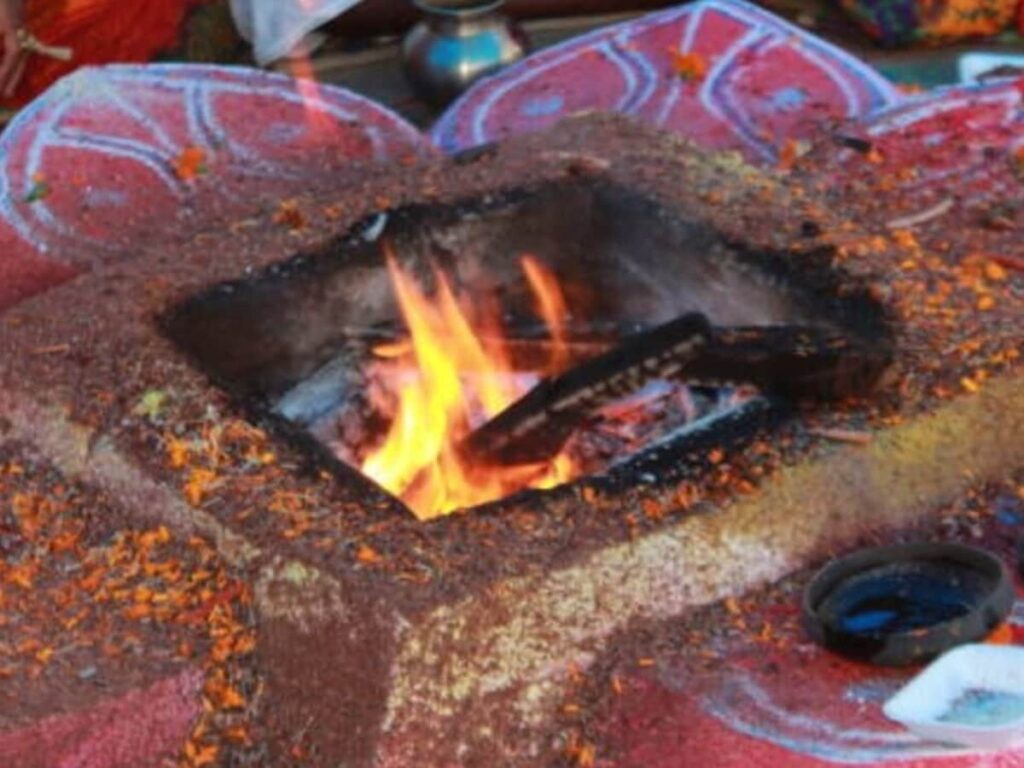Shardiya Navratri is a significant Hindu festival celebrated over nine nights, dedicated to the worship of the goddess Durga. One of the essential rituals during this period is “Hawan,” a fire ceremony where offerings are made to invoke blessings from the deities. The process of conducting a Hawan is not only an essential part of the festivities but also holds deep spiritual significance, believed to purify the atmosphere and create positive energy.
Importance of Hawan in Navratri
The Hawan ceremony is a fundamental ritual during Navratri, aimed at appeasing the divine and inviting prosperity, health, and happiness into one’s life. Here are some reasons why Hawan is considered vital during this sacred festival:
- Purification: The fire symbolically purifies the surroundings and the participants, removing negative energies.
- Connection with Deities: Offerings in the Hawan are presented to deities, forming a connection between the devotee and the divine.
- Symbol of Sacrifice: The Hawan represents selfless giving, aligning with the spirit of devotion prevalent during Navratri.
Material Required for Hawan
The effectiveness of a Hawan largely depends on the quality and quantity of materials used. Below is a table detailing the essential items typically required for performing a Hawan during Navratri:
| Item | Purpose |
|---|---|
| Hawan Samagri | Composed of herbs, grains, and other auspicious items for offering into the fire. |
| Ghee | Used as a primary offering; believed to enhance the energy of the ceremony. |
| Wood | For the Hawan fire; must be pure and preferably from sacred trees. |
| Flowers | Symbolize beauty and devotion; used to decorate the Hawan Kund. |
| Coconuts | A symbol of prosperity; often offered during the ritual. |
Procedure for Performing Hawan
Conducting a Hawan involves specific steps that need to be followed attentively. Below is a simplified guide to executing the Hawan during Navratri:
1. Preparation of the Hawan Kund
Choose a clean, sacred space for the Hawan. Build a Hawan Kund using fireproof materials, ensuring it is directional, ideally facing east. The size of the Kund can vary based on the scale of the ritual.
2. Gathering of Materials
Collect all essential Hawan materials mentioned earlier. Ensure that each item is pure and sourced from reliable places.
3. Invocation and Chanting
Begin the Hawan by lighting the fire with pure ghee and chanting specific mantras dedicated to Goddess Durga. Each mantra has particular significance, inviting the presence of divine energies.
4. Offering Sacrifices
As the fire burns bright, continuously offer Hawan Samagri, ghee, and other items while chanting the mantras. The offerings should be made with devotion and focus.
5. Conclusion of the Ritual
Finish the Hawan by performing Aarti (a ceremonial light offering) and distributing Prasad (blessed offerings) among participants, signifying shared blessings and goodwill.
Conclusion
Hawan during Shardiya Navratri serves as a profound act of devotion and a means of connecting with divine energy. Understanding its importance, materials, and procedure can enhance the spiritual experience during this holy festival. Engaging in such rituals not only enriches one’s personal spirituality but also contributes to communal harmony through the shared blessings of the divine.
